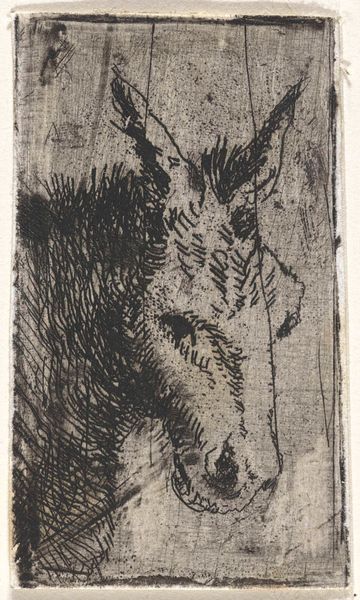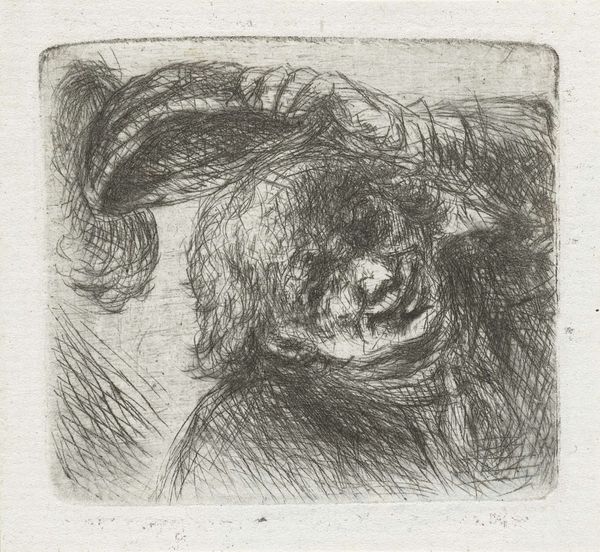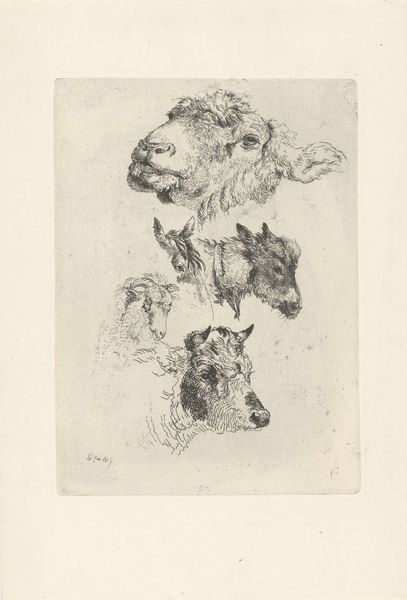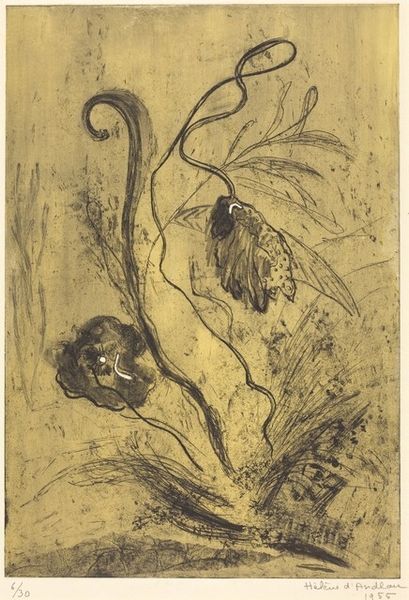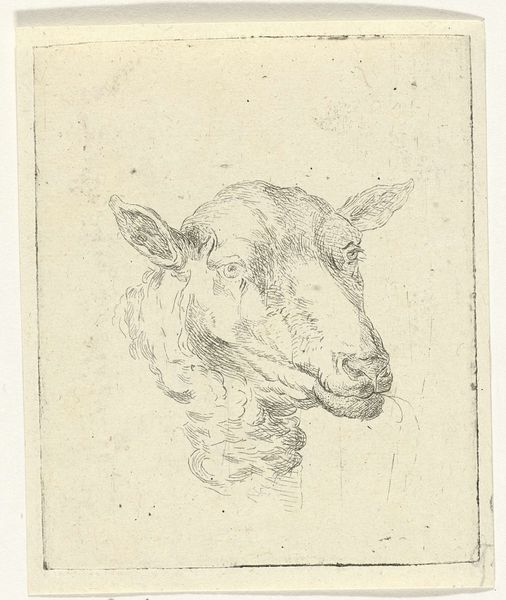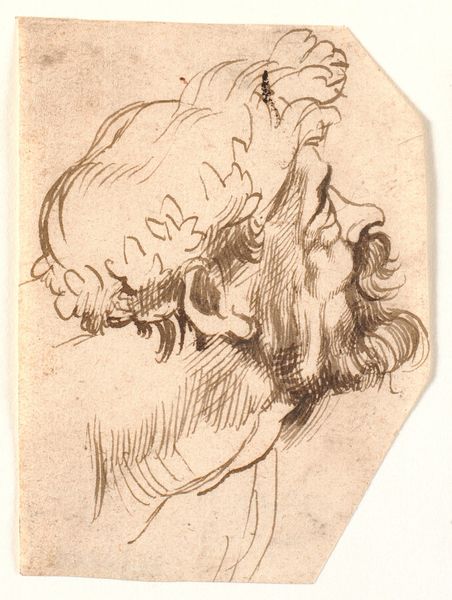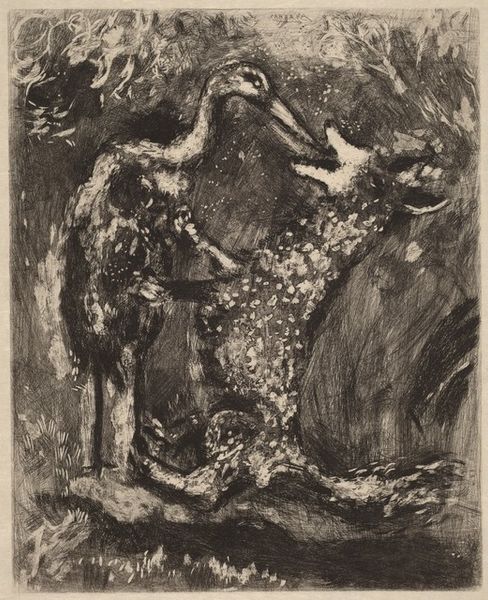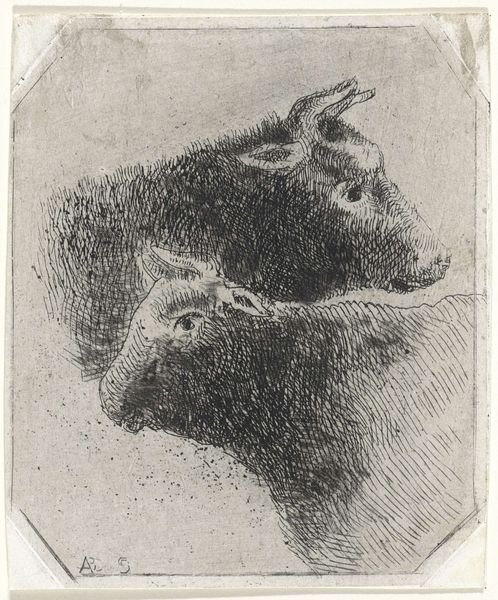
#
amateur sketch
#
toned paper
#
light pencil work
#
pen sketch
#
pencil sketch
#
personal sketchbook
#
ink drawing experimentation
#
pen-ink sketch
#
sketchbook drawing
#
sketchbook art
Dimensions: height 134 mm, width 94 mm
Copyright: Rijks Museum: Open Domain
Dirk Dirksen created this etching, called "Kop van geit", or "Goat Head" in Dutch, using delicate lines to capture the animal's features. Dirksen lived and worked during a time of significant social and economic change in the Netherlands. The Dutch Golden Age, characterized by prosperity and artistic innovation, had long passed, and artists like Dirksen found themselves navigating a different landscape, one in which the representation of rural life and animals held particular appeal. Dirksen's choice to portray a goat is not without cultural significance. Goats often symbolize virility, stubbornness, and independence. How might these qualities reflect broader societal attitudes toward nature, labor, and freedom during the 19th century? What does it mean to single one animal out? The intense gaze, the strong horns... Dirksen seems to ask us to consider the animal's unique identity. Through his careful rendering, we are invited to contemplate the complex relationship between humans and the natural world, and perhaps even to question our own place within it.
Comments
No comments
Be the first to comment and join the conversation on the ultimate creative platform.
